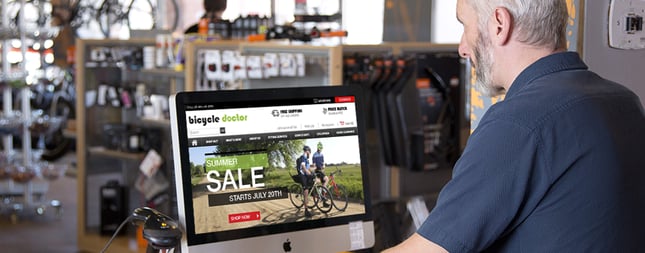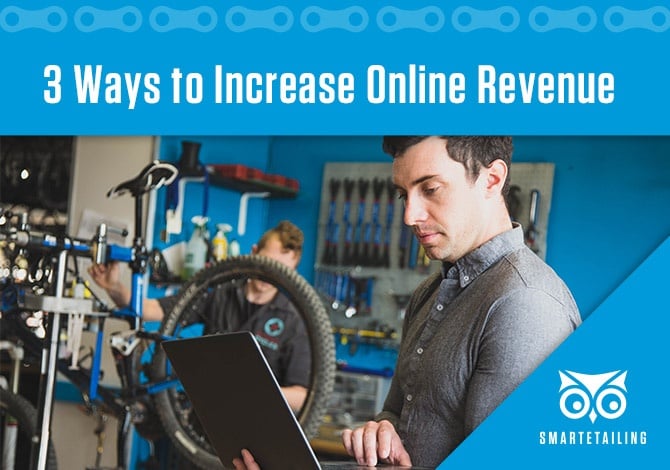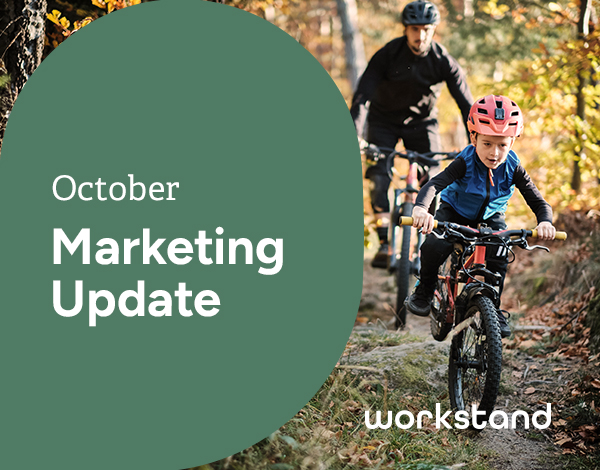2016 Starts Now, Are You Ready?

For many IBDs, July is one of the highest volume sales months of the year and with a little extra effort, retailers can use simple digital marketing to push those numbers up even higher. If your store already has a strong community to reach out to (email lists, social followers, etc.), targeting this group of customers can be done with little to no additional expenditure. Also, marketing to existing customers can pay big dividends. These are people that have already shown interest in your products and brand. They are more likely to act on your promotions and are more cost effective to reach.
Here are four easy ways retailers can use digital marketing to promote their business this summer.
1. Make the most out of new model releases
This time of year, brands are starting to release next year’s models; finding a way to fit new product into your inventory plan gives customers a reason to come into the store. Starting with your shop’s website, make sure these products show up as soon as they are released, as customers want to see pricing and inventory information. If you’re using SmartEtailing to host your website, the library already contains hundreds of 2016 products ready to display.
While you don’t want to inundate social followers with sales-pitch-heavy posts, new product releases can make for great content—especially if a catchy photo or video is part of it. Identifying customers who might be interested in these products and sending them personalized emails is another way to help garner attention to new models. Any posts, emails, or other communications should point back to the store’s website.
2. Leverage supplier closeouts
Managing inventory levels and planning model year changeovers is a critical part of what retailers do. Using your website to promote discounted items can expose them to a wider audience and help you maintain better margin when discounting is inevitable. When your website integrates with supplier pricing and inventory, it’s also possible to show customers discounted product that’s available at the warehouse. Some suppliers manage discount pricing which can be automatically pushed to your website, taking the burden off the retailer. For a sales tool in the store, you can include closeout lists on your website with products available both in store and in warehouse. Make sure you point back to closeout pages on your website in your email marketing and social media blasts.
3. Use digital to promote an end–of–summer sale
Many stores plan for a big sale near the end of summer. As with any other important event happening in-store, create an event page for it on your website, then link to that landing page with a strong call to action. Once the sale has started, make sure updated pricing is visible for individual products on the store’s website. Consumers expect to see this information on-line and may not come to the store unless they see products they are interested in on the website.
Once you have a solid landing page on the store’s site, start driving traffic to it. Email blasts, social posts, and even banner ads on the local newspaper’s website are great ways of getting the word out. Boosting social posts and engaging Google Adwords are cost-effective ways of reaching even more potential customers, if you are able to invest in some additional marketing. Retargeting (with ads that follow you around the internet) people who visit the store’s website is another way to promote events.
With all of these methods, be sure to geotarget your local area. Tracking visits to the landing page for the event can give you an idea of how your marketing is working leading up to the event, so that adjustments can be made. Event-based marketing offers the potential for immediate ROI, so take the time to measure what you do. Take a look at what’s generating the most traffic on your website and social platforms, then look at the increase in sales on the days of the event. We’ll post more on ROI in the near future.
4. Throw a Tour de France party
Invite your customers to an after-hours party at the store to watch a popular stage. A big screen and extra sound equipment will enhance the viewing experience. Food and refreshments always go over well, and you could have a TDF trivia contest during commercial breaks with prizes awarded at the end. Social media and your email list are great no-cost ways to promote this event. Again, create highlights on the home page of your store’s website with a strong call to action that links to a specific landing page for the event.
Using social media to promote your store gives a level of flexibility and measurability that isn’t possible with traditional advertising. Plus, the increased activity on your website helps boost SEO and gives visitors a reason to come back frequently. The ability to quickly put together promotions, make changes on the fly, and measure the results is a real advantage to a web-centric approach to marketing. Best of all, these tactics are low-cost and scalable to any retailer’s budget.
You May Also Like
These Related Stories

3 Ways to Improve Your Online Business

Digital or Traditional Marketing?

.png?width=1676&height=300&name=WS_Logo_full_blue%20(1).png)
No Comments Yet
Let us know what you think